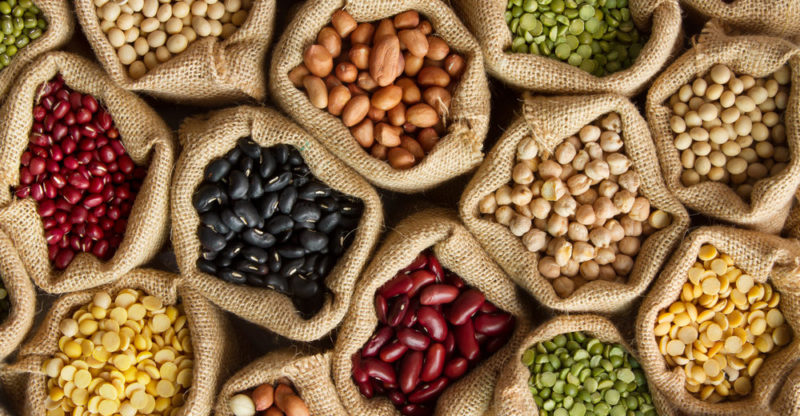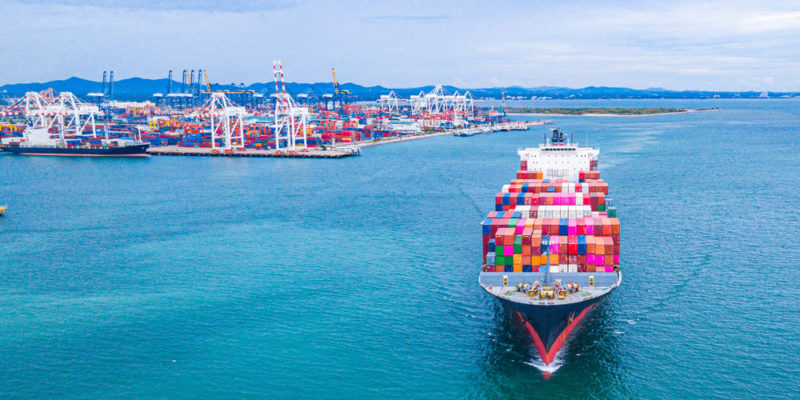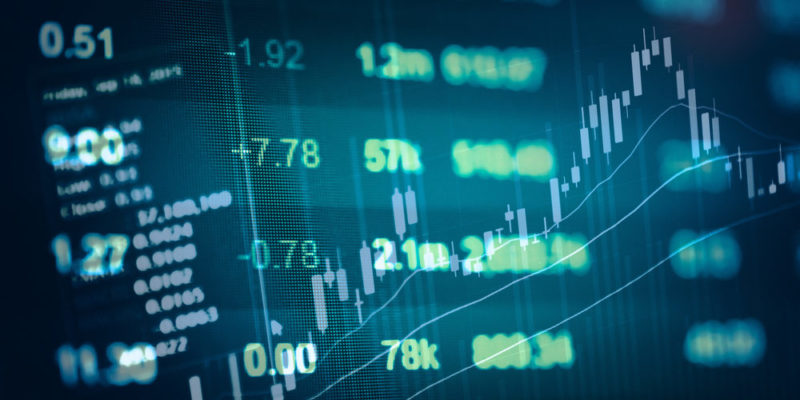We explain what trade is, how it originated and the types that exist. Also, what are its characteristics and why is it important.
What is trading?
Trade is a socioeconomic activity that consists of the more or less free exchange of goods or services between a producer or supplier and a consumer or applicant. It is based on the common considerations of a buying and selling market .
In other words, trade is an economic activity that consists of the exchange of goods and services between human beings , organizations or even entire countries. It is one of the central dynamics to achieve peace and stability of (and between) peoples, as is the defense of their respective commercial interests.
It is an activity inherent to the human species and has accompanied it since ancient times. However, as human populations grew, it became more complex . This is because the groups learned to produce different goods and services, and became interconnected.
The term commerce is also often used to refer to stores or market places in which consumer goods are generally sold .
Origin of Trade

Like many other aspects of human culture , trade emerged during the Neolithic period .
It was then that human groups began to use agriculture .
This economic activity led to the settlement of formerly nomadic or semi-nomadic peoples (generally hunters and gatherers).
Once they were able to obtain their own food, they no longer needed to constantly move from place to place in search of new means of subsistence.
But on some occasions the amount of food produced exceeded the needs of the population that planted it. Thus they could exchange the surplus for other goods from other populations.
The exchange could be for other foods, which allowed these societies to have a more varied diet and become stronger populations. In addition, they could obtain specific services in exchange for their production: protection, construction, tools, etc.
In other words, trade was born as the idea of exchanging desired goods in exchange for a surplus of available ones, for the mutual benefit of those involved.
History of Trade
Trade allowed ancient human communities to prosper , exchanging goods and services for mutual benefit. Initially it was based on a system known as barter: the exchange of merchandise for others directly.
The difficulty of the exchange was that both elements of the exchange had to have the same value . To remedy this inconvenience, money was invented , which initially consisted of goods of universal value: cocoa beans, lumps of salt or certain types of seashells.
Because of their undisputed value, they were accepted by all the merchants in a community . This method eventually led to the use of gold as a universal value and to the minting of the first coins . In addition, it allowed to store value, that is, to save in non-perishable units.
The money depended on the specific communities that accepted it, and outside of them it had no value. So as nations prospered and became interconnected, trade required different types of currencies .
They were identified with the iconography of the government of a nation. On the other hand, the banknotes used to bear the marks of a specific bank , since they were initially payment notes (promissory notes).
Types of trade

There are different types of trade, but a first distinction must be made between wholesale and retail trade:
- Wholesale trade. Known as "wholesale" or "wholesale". It generally involves the sale of large quantities of merchandise, of which the buyer is not usually the final consumer, but a reseller or an industrialist who will use them as raw material for a secondary process that in turn will yield tradable goods.
- Retail commerce. Known as “retail” or “retail” or “retail”. It is generally the exchange between the seller and a buyer who is also the definitive or final consumer of the merchandise. In that sense, it usually involves the sale of items in small quantities (or by units).
- Domestic trade . It occurs within the territory of the same country or community, using a single and common legal and financial framework.
- foreign trade . It occurs between people or companies located in different countries and is governed by a common international code.
- Land, sea or air trade . They are the respective modes of merchandise exchange that transport it by land, sea or air vehicles, respectively.
- Electronic commerce . A variant born in the light of the Internet and globalization , which allows the exchange of materials with people in distant countries, using various digital mechanisms for understanding and payment.
Trading systems
Throughout human history there have been different systems of trade and wealth, each with implications and problems that spawned the next. Some of the most relevant are:
- Mercantilism . It was the economic thought that governed Europe in the 17th and 18th centuries. It started from the idea that the planet 's wealth was fixed and limited, so that countries had to compete with each other to get hold of it, represented in quantities of precious metals such as gold and silver . This struggle led the countries to try to absorb the other, producing huge wars between powers.
- Colonialism . The direct consequence of mercantilism was the creation of a network of colonies throughout the world by the European powers. These colonies had the mission of supplying desired materials and raw materials to the metropolis, which managed trade from afar to always benefit more than its colonies.
- Capitalism . As a result of the liberal theories of Adam Smith, mercantilism gave way to capitalism , which as a system prefers the idea of a market free of state regulations and interventions in the competition between those who produce supply and those who activate demand .
Balance of trade
 Trade balance is called the record of imports and exports of a nation during a given period. It allows us to understand if its commercial performance has generated wealth or rather has consumed it to perpetuate the national functioning.
Trade balance is called the record of imports and exports of a nation during a given period. It allows us to understand if its commercial performance has generated wealth or rather has consumed it to perpetuate the national functioning.The results are obtained by subtracting imports from exports . If the figure is positive, it means that the country generates a trade surplus that means an increase in its capital. If it is negative, it is observed that the country invests its money in buying what it needs to continue standing, decapitalizing itself.
Why is trade important?
Trade is a key element of human history . Certain perspectives (such as the Marxist) understand it, along with production and other elements of the economy , as the force that shapes societies.Trade has allowed human development, redistributing goods . Thus, it allows human groups to benefit from their efforts without having to constantly repeat the same actions in an identical way.
Free trade agreements
 Free Trade Agreements (FTAs) are regional or bilateral trade agreements that allow the unification of the respective markets for goods and services of two or more countries. They eliminate or considerably reduce the tariffs generated by the circulation of goods or the provision of services.
Free Trade Agreements (FTAs) are regional or bilateral trade agreements that allow the unification of the respective markets for goods and services of two or more countries. They eliminate or considerably reduce the tariffs generated by the circulation of goods or the provision of services.They are one of the most common commercial understanding mechanisms today. Examples of them are the African Economic Community (AEC) , the Central European Free Trade Agreement (CEFTA) or the North American Free Trade Agreement (NAFTA).
International organizations
There are different international organizations that ensure the establishment of fair trade rules or understanding between trading nations. Among them are:
- World Trade Organization (WTO)
- Organization for Economic Cooperation and Development (OECD)
- World Bank (WB)
Fair Trade
 An alternative commercial understanding is known as fair trade or equitable trade . It is promoted by various international NGOs , in accordance with the United Nations Organization (UN).
An alternative commercial understanding is known as fair trade or equitable trade . It is promoted by various international NGOs , in accordance with the United Nations Organization (UN).The goal is to drive world trade towards more favorable scenarios . To do this, according to these organizations, it is necessary to consider the needs of pacifism and environmentalism .
Trade News
At the beginning of the 21st century, trade is governed by globalization . This implies the interconnection of the different latitudes through information and communication technologies . As a consequence, investment capitals can operate fluidly between different countries.On the other hand, globalization implies the internationalization of supply and demand . That has turned the entire world into a gigantic common market. In this scenario, the trend is towards the elimination of barriers.
These new conditions benefit some and harm others . For example, major economic powers can benefit from other countries' lack of barriers to trade, while protecting their own economies through their military and economic superiority.
The above content published at Collaborative Research Group is for informational and educational purposes only and has been developed by referring to reliable sources and recommendations from technology experts. We do not have any contact with official entities nor do we intend to replace the information that they emit.
Passionate about understanding and contributing to a world that does not stop changing. New forms of Work, Sustainability and Technology. For many years he has worked as a creative for large international companies. He has a Ph.D. in information technology and he has been doing quantitative research in the interdisciplinary areas of information systems, cyber security, data analytics and artificial intelligence. He continue to look for creative solutions through technology to help companies to be more humane and sustainable..
Leave a reply
Your email address will not be published. Required fields are marked *Recent post

Sport: What Is It, Types, Risks, Features, Characteristics and Examples

Dogs: Emergence, Features, Characteristics, Feeding and Breeds

Story: Definition, Elements, Structure, Features and Characteristics

